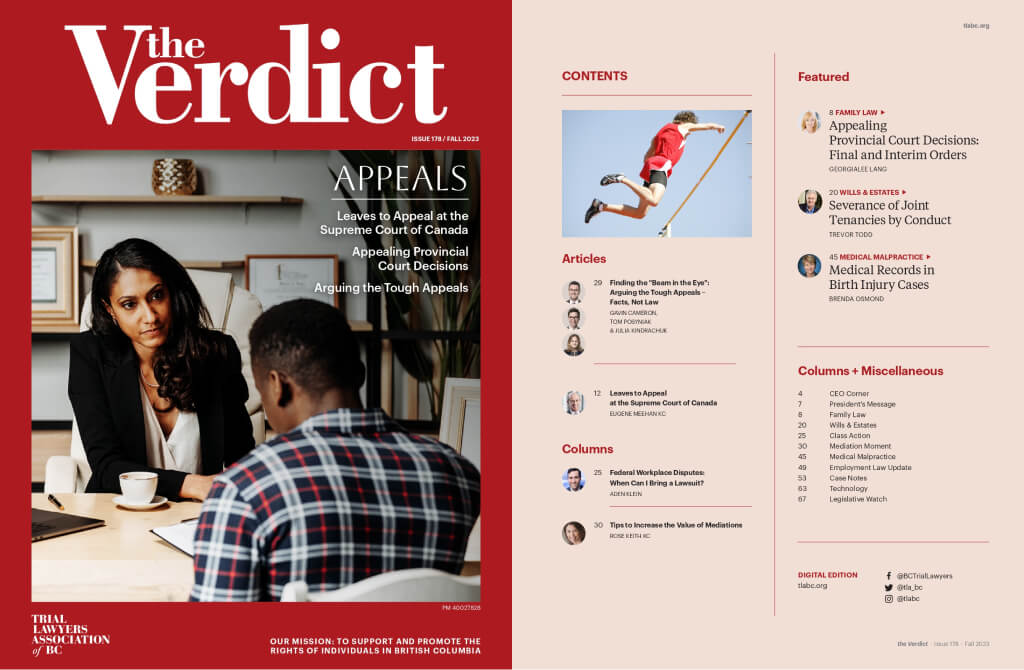
This is the seventh article in our series aimed at providing a detailed examination of the challenges and pitfalls in different types of medical negligence lawsuits and approaches to overcoming them. Brenda Osmond discusses the importance of conducting a detailed review of the medical records in a medical malpractice lawsuit, with a focus on birth injury cases. This article reviews cases in which the courts have addressed various issues relating to medical records, including late entries, lack of charting or incomplete charting, and the interplay of medical records and a defendant’s usual practice.
Introduction
Medical records provide the foundation for safe health care for patients. They are also the cornerstone of any medical malpractice lawsuit. They can be admissible in court as business records under an exception to the hearsay rule, without calling the maker of the notes to testify, provided they meet the requirements of the Evidence Act, RSBC 1996, c 124. s. 42. Whether the information in the records is an accurate representation of the care provided is a live issue in many medical malpractice lawsuits. The article will explore a number of recurring themes related to medical records, with a focus on how these themes play out in baby cases.
Nothing charted / nothing done
There is a saying in healthcare that if nothing was charted, then nothing was done. As trite as that sounds, it was the winning mantra in Pinch (Guardian ad litem of) v. Morwood1 . Here, the plaintiff mother suffered an eclamptic seizure two days after being seen in the emergency room of the local hospital. In the ER her blood pressure had not been recorded in the chart, and despite hearing detailed evidence from the bedside nurse about her approach to taking and recording a patient’s blood pressure, the court found that the blood pressure had not been taken, and if it had been taken it would not have been normal. This would have led to further testing, referrals and treatment which would have prevented the eclamptic seizure and the ultimate brain injury to the infant plaintiff. In this fact-driven case, the court noted that the absence of charting permits the inference that correct steps were not taken.2,3 Citing Skeels (Estate of) v. Iwashkiw4 [Skeels] the court noted:
112 The lack of charting does not necessarily mean that procedures were not conducted, nor is the mere lack of charting prima facie evidence of negligence in the treatment. However, the lack of charting makes it more difficult for a court to determine matters of credibility where individuals who are trained to chart, did not do so. This failing, despite the opportunity to do so, makes it harder for a court to accept that the correct steps were followed and appropriate procedures were done as it would have been logical for them to be recorded had they been done: …
There is a method of documentation known as “charting by exception” in which a nurse does not chart a parameter unless there has been a change from a previously documented result. Skeels involved a delay in delivery due to a failure to recognize and manage shoulder dystocia. The court was critical of the “charting by exception” practice and specifically noted several examples where results of various assessments were charted even though there had been no change from a previously documented result, suggesting that charting by exception was, in fact, not the practice at that hospital.5 By extension, this suggested that that the lack of documentation over a critical 1 ½ hour period of time in which the plaintiff mother was fully dilated and the baby was eventually delivered, indicated that no care had been provided over that time period.
